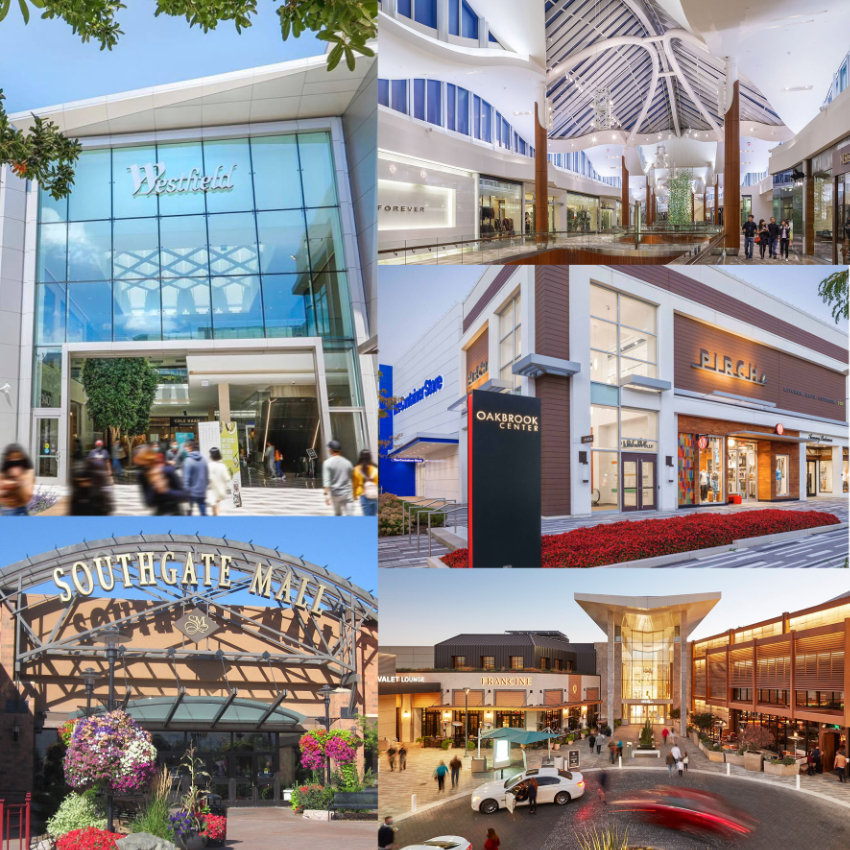So far, malls have not had an easy year – but some shopping centers have managed to thrive despite the category’s wider challenges. We looked at retail foot traffic data from five high-performing malls throughout the country to understand what drives these outliers’ success.
State of Indoor Malls in 2022
In the second half of 2021, mall foot traffic was making a comeback. According to the Placer.ai Mall Index (that tracks anonymized visitation data for 100 top-tier indoor malls throughout the country), visits to indoor malls in July and October 2021 were higher than they had been in the same months in 2019. And December 2021 foot traffic was only 3.5 percent lower than it had been in December two years prior, which meant that despite the rise in ecommerce and the budding Omicron wave, the holiday shopping season was bringing almost as many consumers to malls as in pre-Covid times.
With the rise of ecommerce, consumers no longer need malls to shop efficiently. But just because consumers don’t need malls doesn’t mean that they don’t want them. And the best malls are successfully attracting visitors by creating an exciting and stimulating place for people to meet friends, be entertained, eat, and of course, shop and discover new products.
This year, however, has been off to a rocky start. Once Omicron picked up in earnest, January 2022 visits plummeted. And following a brief respite in February 2022, when visit numbers almost reached pre-pandemic levels, March 2022 foot traffic fell once more as inflation and high gas prices strained consumers’ shopping budgets. Today, although it is increasingly clear that the pandemic didn’t end mall-based retail, shopping centers of all types are still struggling with persistent year-over-three-year (Yo3Y) visit gaps.
But despite the challenges facing the wider category, several shopping centers stand out as beacons of success. Since the beginning of the year, Westfield Valley Fair in CA, Oakbrook Center in IL, Scottsdale Fashion Square in AZ, Natick Mall in MA, and Southgate Mall in MT have all significantly outperformed the Placer.ai Mall Index average. Over the past couple of months, all five malls have also exceeded their own 2019 monthly visitation levels. What is driving these outliers’ success?
Foot Traffic Metrics, Pre- & Post-Pandemic
Analyzing the recent foot traffic metrics for these five high-performing malls provides some interesting clues. The chart below shows the trade area (the area from which at least 70 percent of each mall’s visitors travel to reach the property) from January to June 2019 and 2022 and the median household income (HHI) within the trade area, as well as the share of visitors who visited each mall at least twice.
The five malls analyzed display a wide range of median HHI, which indicates that there is no “one size fits all” formula that can be used to define the ideal consumer demographic that will drive mall success. Malls can do well by catering to low, middle, or high-income consumers – the key is to offer a mix of stores, experiences, and dining options that can appeal to the specific community within each mall’s reach.
Perhaps more surprising, the HHI for the trade area of all five malls dropped between 2019 and 2022 – which means that the Yo3Y rise in visits isn’t stemming from an increase in those with greater purchasing power.
So, what are these malls doing to attract shoppers? Focusing on the trade area size and share of returning visitors may reveal some insights.
Focus on Experiences
Since 2019, all five malls have seen an increase in their trade area size coupled with a decrease in the share of returning visitors. This means that the Yo3Y increase in monthly visits isn’t driven by loyal shoppers who are visiting the mall more frequently than they were in 2019. Instead, the growth seems driven by an increase in unique visitors who are traveling to the mall from farther away. How have these malls increased their reach?
One answer could be that all five malls invest in experiences. Last year, the Natick Mall opened Level99, an immersive gaming center. Oakbrook has been experimenting with art exhibits and has recently launched a Stranger Things pop-up store. The Scottsdale Fashion Square houses Wonderspaces, an interactive, immersive art installation space, as well as Selfie WRLD, which is described by its website as “the #1 trending selfie museum in the world.” Westfield Valley Fair held several weekend events with live performances, a bounce house, and retailer pop-ups to celebrate its post-Covid reopening. And the Southgate Mall in Missoula, MT has recently added interactive art venue Giggle Box to its tenant mix.
Malls Need to Give Customers a Reason to Visit
With the rise of ecommerce, consumers no longer need malls to shop efficiently. But just because consumers don’t need malls doesn’t mean that they don’t want them. And the best malls are successfully attracting visitors by creating an exciting and stimulating place for people to meet friends, be entertained, eat, and of course, shop and discover new products.
In the long term, the pandemic may have a positive impact on shopping centers. Widespread store closures have left open spaces and forced many mall operators to move beyond their comfort zone to bring in art, pop-up shops, and other attractions that connect shoppers with the experiences that they are increasingly expecting. Top-performing malls are working hard to stay relevant by taking risks and getting creative to provide their customers with unexpected experiences that keep people coming back.
Malls will likely continue to play a key role in American retail going forward. But those that fail to innovate may be left behind.



